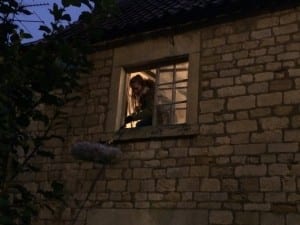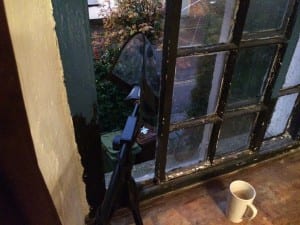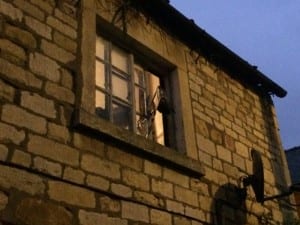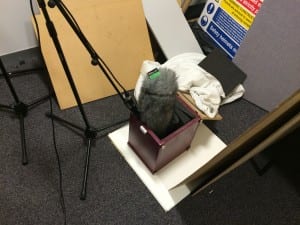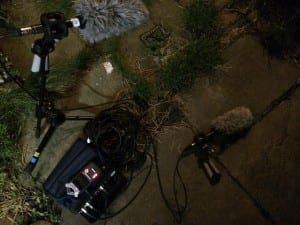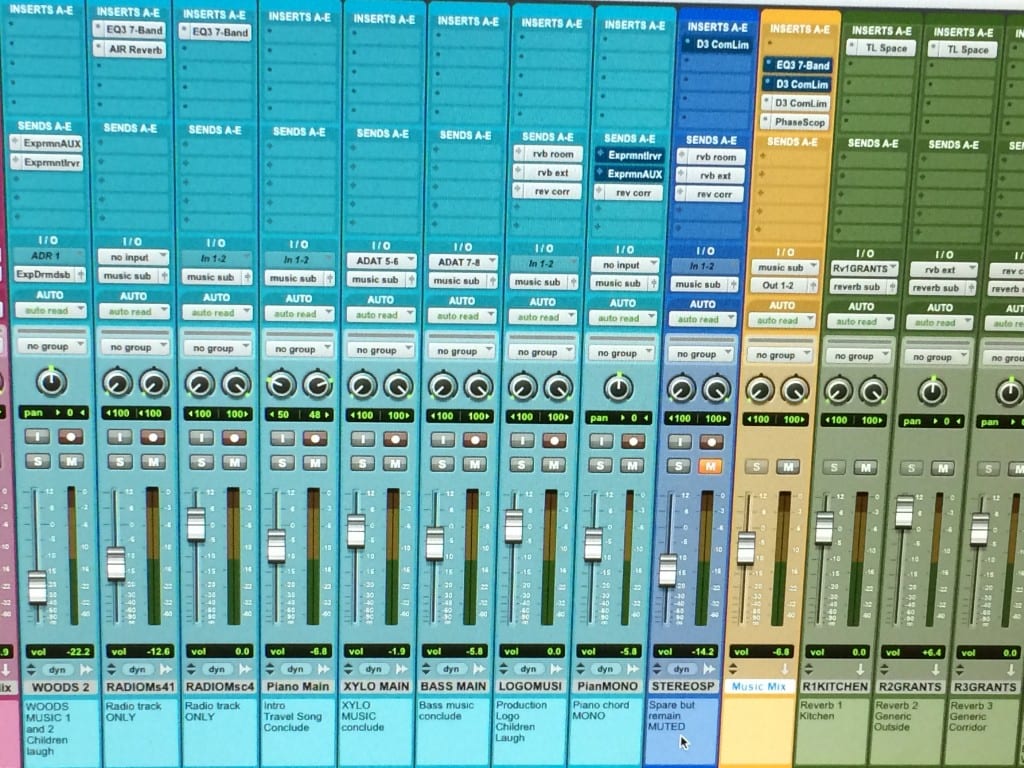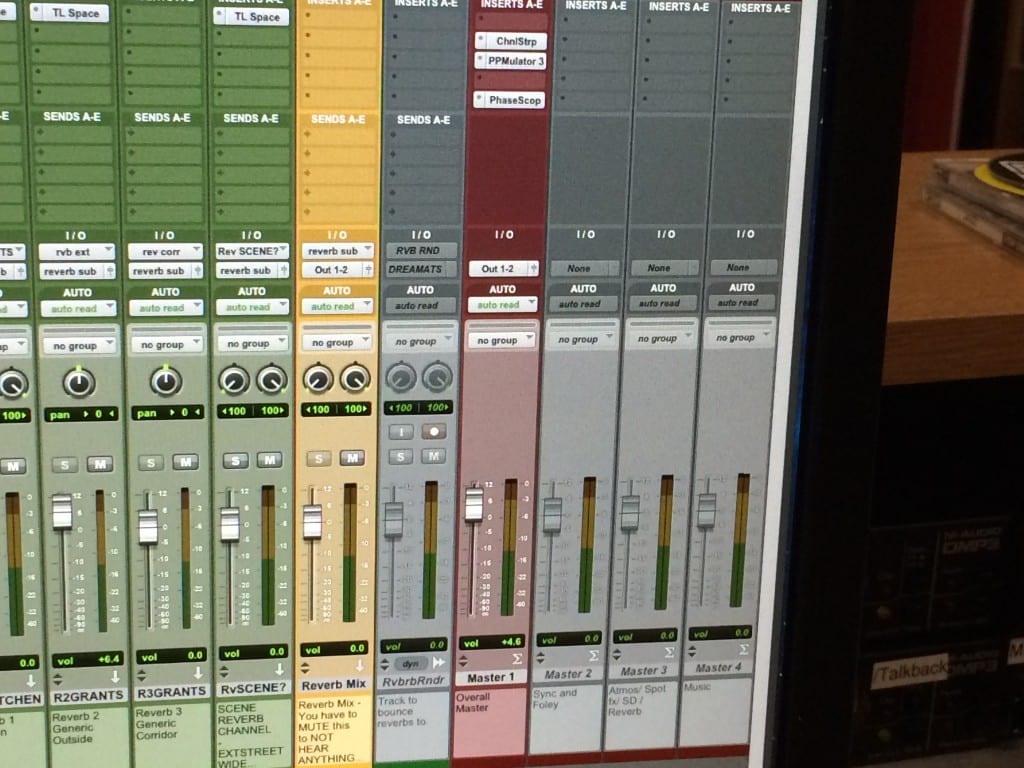A waterloo moment in George was the sound of the threatening teenagers spray-painting the house and then running away right at the end. I felt the perspective for the design here this should support the camera’s and be heard from inside the house.
There follows a quick, and largely photographic, precis of the various methods we used to try and achieve this.
Location Sound
The scene was shot multiple times, and we collected a considerable amount of location audio from multiple angles and with multiple mics. However, this was blighted by two things. Firstly, it was raining, but the picture doesn’t look as though it is in the final cut. Secondly, it was roughly 5:30pm on a week day, and traffic on the road outside the house was relatively busy at this time meaning we’d collected almost no clean takes of some fairly subtle sounds on review.
The stereo mic position above did collect some unexpectedly excellent stereo fields of the cars passing on the road below, however.
First foley + sfx attempt
Turning to ‘easy’ methods in post, I tried to use a combination of sound effects from the library for the spray and cans and a walled off foley mic in various positions and concrete slab for the footsteps.
Sadly, this didn’t have anything like the desired perspective effect.
Foley on Set
So, we returned to the set approximately three months after the shoot with a portable recorder and reran the action in location foley. Once again, traffic and circumstances conspired against us, as we pitched up during the bell ringing at the Cathedral, which is clearly audible across uphill Lincoln. This, alongside the fact that the set (an uninhabited residential house) is very old and not sound proof in any sense, meant that the audio we captured inside with the front door closed was also of the wrong perspective, as it sounded more like the action was outside and still very close.
Solution
On our return from the above we recorded one more attempt at this foley on campus, through a large, closed double glazed glass door at the back of media loans. This finally furnished usable audio for the scene, once we’d cleaned the internal air conditioning sound out of it with EQ.
KEY POINTS
Problem solving for foley perspective – Application of skills and conduct in production
- To manage the post-production workflow and contribute substantially to the sound design, construction and editing of the piece.
